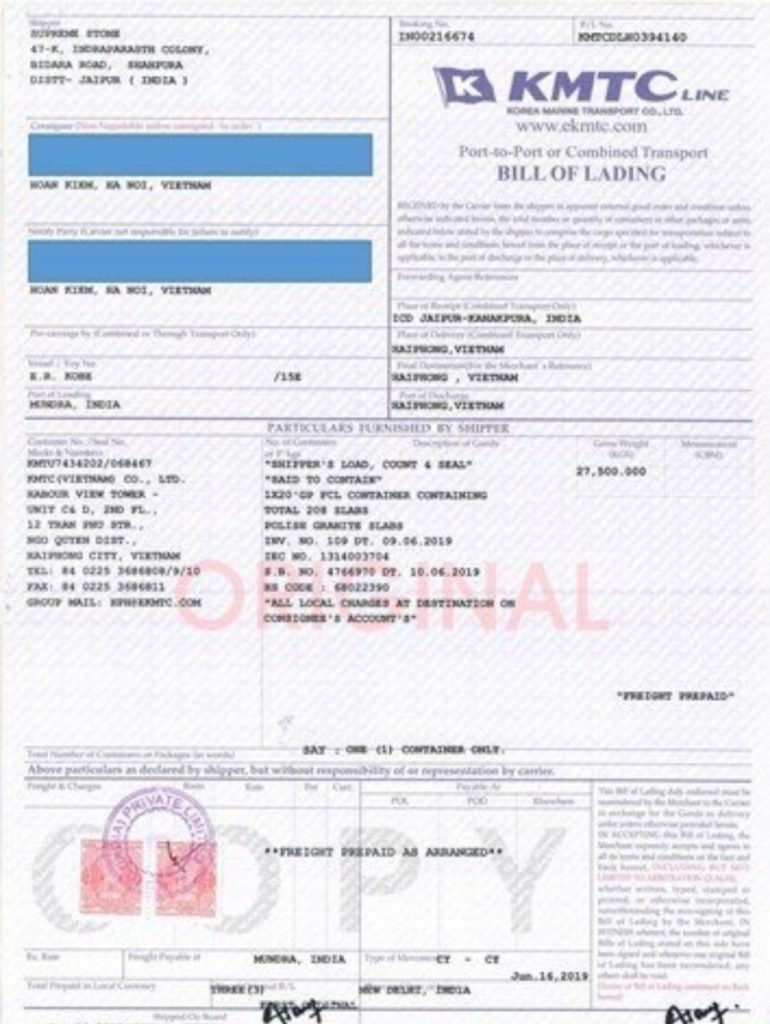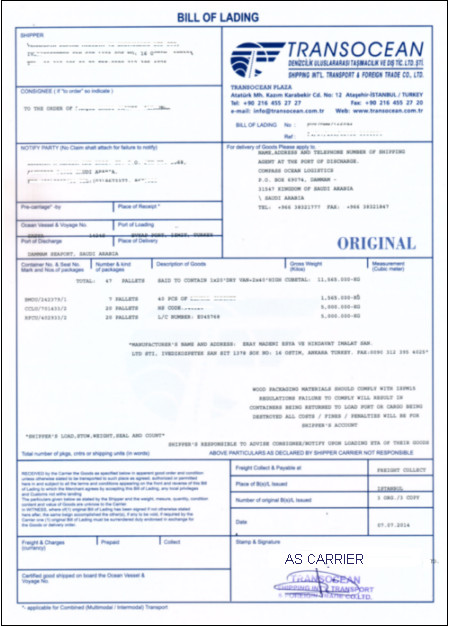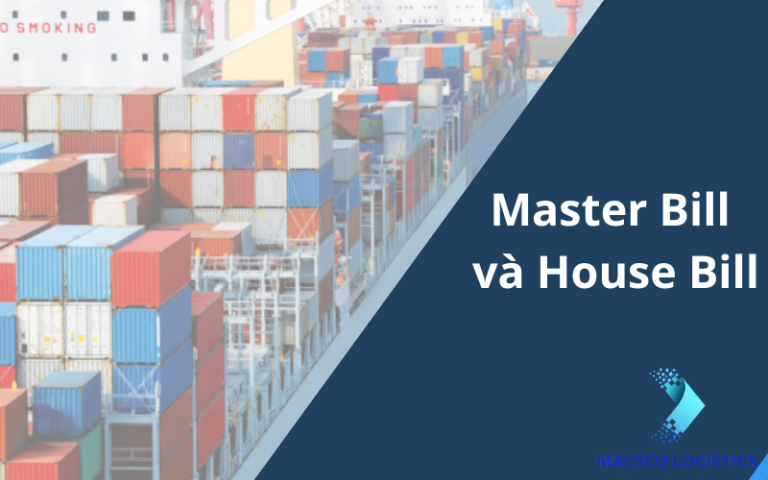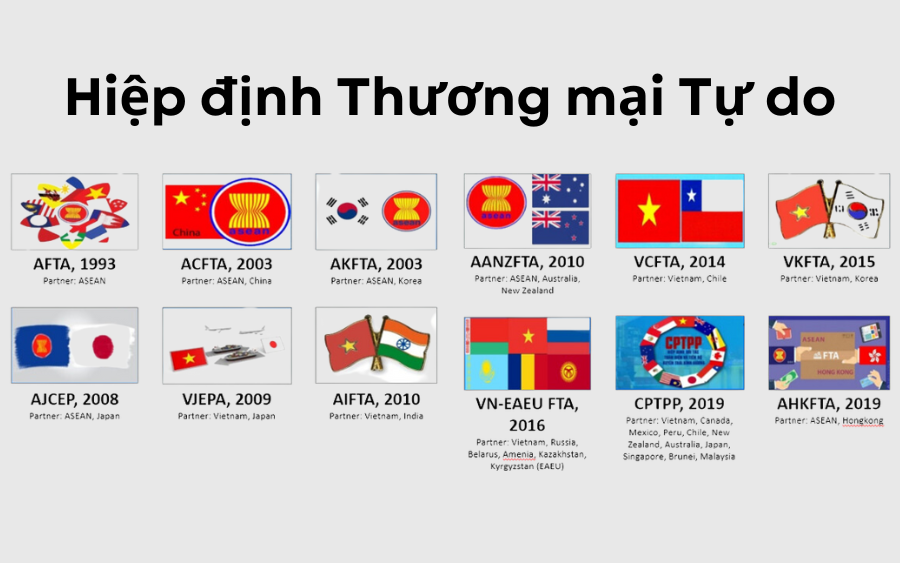Differences between Master Bill of Lading and House Bill of Lading: What should you know?
In the field of freight transportation and international trade, two familiar terms "Master Bill" and "House Bill" are often mentioned. Although they are both ocean bills of lading, they serve different purposes and scopes. To better understand the difference between Master Bill and House Bill, we will go further into understanding each aspect of them.
1.What is Master Bill of Lading?
MBL stands for Master Bill of Lading, this is the main type of bill of lading issued by the owner of the VOCC (Vessel Operating Common Carrier) means of transport to the person named on the Bill as the shipper.
Fastest way to identify: When you look at the top left of the bill of lading, you will see the shipping company's name and logo, phone number, shipping company's office, etc.

Mater Bill
2. What is the House Bill of Lading?
HBL stands for House Bill of Lading. HBL can be issued by an NVOCC (Non Vessel Operating Common Carrier) type of carrier. However, in Vietnam, this type has not yet been developed and popularized, so HBL is often understood to be issued by Forwarder companies (FWD).
After customers complete tasks such as packing goods, delivering goods to the Forwarder company, completing important procedures related to export and paying corresponding fees, FWD companies will issue a House Bill. of Lading (HBL) for customers.

House Bill
3. Distinguish between Master Bill of Lading and House Bill of Lading:
After learning the concepts of MBL and HBL, you certainly have a deeper look at these two types of bills of lading. Now, let's differentiate more clearly between MBL and HBL.
Alike:
- All are ocean bills of lading
- All can make Original Bill, Surrender Bill, Seaway Bill,...
Different:
4. Notes on Master Bill and House Bill:
It is not necessary for a shipment to have both an MBL and an HBL bill of lading, which also means that it is not always necessary to distinguish between a Master Bill and a House Bill. In some cases, the shipper (shipper) can bypass the FWD company and work directly with the shipping company or book through the FWD company but require the person named on the bill of lading to be the goods owner. At that time, the shipping company will issue a Master Bill to the goods owner and the House Bill will not deliver the goods.
In some special cases, a shipment may have one Master Bill and many House Bills.
A typical example is when transporting containerized goods (LCL). In this case, the shipping line transports the entire container, while the forwarding company (Consolidator) will consolidate the individual shipments and provide a House Bill for each corresponding shipment. However, there is only one Master Bill for that entire shipment. Or FWD company can receive a shipment and only provide a single House Bill for that shipment. As a result, the shipment will have multiple bills of lading (B/L) and delivery orders (D/O) corresponding to each House Bill.
In short, the most basic difference between MBL and HBL depends on the issuer, MBL is from the shipping company and HBL is from the FWD company.
Above are some examples of Master Bill and House Bill, hopefully with the above sharing, you will better understand these two types of bills of lading, as well as how to distinguish them. If you have questions that need answering or need advice on transporting import and export goods, please contact Macsco Logistics immediately for the fastest and most accurate support.
For further information and questions, please contact:
MACSCO LOGISTICS LIMITED
Address: 64 Nguyen Dinh Chieu, Da Kao Ward, District 1, Ho Chi Minh City, Vietnam
Phone: (84 28) 6270 6576
Email: anna@macsclogistics.com
Website: https://macscologistics.com










